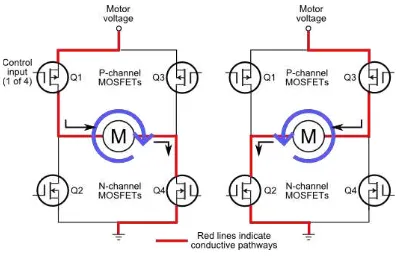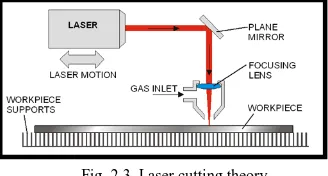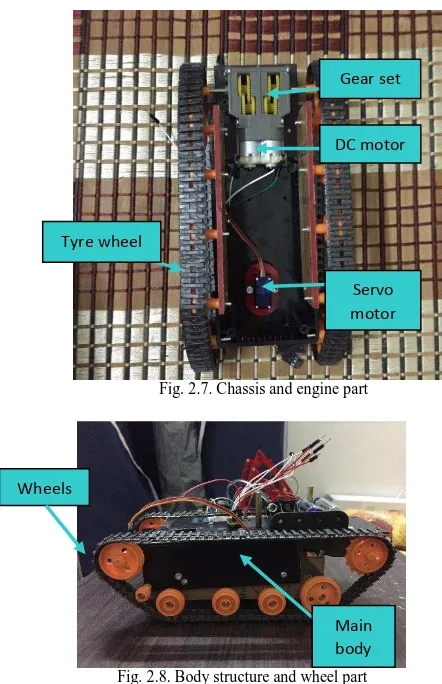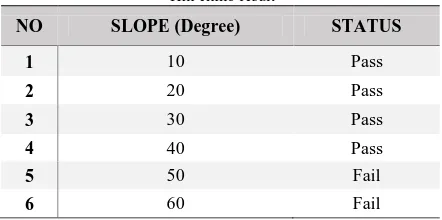Design and Development of Search and Rescue
Robot
Khalil Azha Mohd Annuar*, Muhammad Haikal Md Zin, Mohamad Haniff Harun, Mohd Firdaus Mohd Ab Halim and Arman Hadi Azahar
Creative Innovation Technology Management Research Group (CITeM)
Department of Electrical Engineering Technology, Faculty of Engineering Technology, Universiti Teknikal Malaysia Melaka, Hang Tuah Jaya, 76100 Durian Tunggal, Melaka, Malaysia.
*Email: [email protected]
Abstract-- Search and rescue robot is developed mainly to move through rubbles and debris. When a natural disaster such as an earthquake struck causing the building to collapsed, this robot can be used to search for victims and transfer to safe place. Search and rescue robot is equipped with a robotic arm to perform the evacuation process. With this robotic arm, robot can easily grab the victim in collapsed building and bring to safe place. Generally, there is a lot of robot like this used for rescue operation in collapsed building. But non of them is control by using mobile devices. So this paper is purposely designed to develop a prototype of robotic vehicle using mobile devices as controller by using Bluetooth transmission. The distance can vary from 10 meter to 100 meter depending on the type of Bluetooth module used. This robot is powered by Arduino Uno R3 board using 9V AA battery for power supply. In order to control this robot using mobile devices, an application was designed by using MIT Inventor to create an application interface between robot and mobile devices. While for the robotic arm will be design by using Autocad software. In addition, robotic arm will also use four servos to move.
Index Term-- Rescue robot, Bluetooth, Arduino
I. INTRODUCTION
Human rescuers have very limited time (about 48 hours) when it comes for searching and rescuing trapped victims in collapsed structure. The chance for rescuing victims that are still alive is very low. This is because of unsafe situation that needed to be well prepared before rescuers can enter the building. Usually when an earthquake hits an area, the damage scale will cover a big area. Because of this problem, human rescuers will need a lot of time for search and rescue mission. The more time they take, the more people will die. In such a critical situation robot technology will be a great help for the rescuers [1-4].
Search and rescue robot are very useful for search and rescue mission. It can be used to search for victims in all kind of area such as hazardous area, sea area and danger area. Mobile robot can be very efficient tools to speed up search and rescue operation [5]. This robot is designed to be small so that it can enter small gaps or hole that are impossible for human rescuers to enter. This can increase the chance to save more victims in a time. Robot is equipped with several features and can be control by human rescuers mobile devices in a close range (10 meter). Robot can also move through rubbles and debris in collapsed structure to search for victims.
According to M. Selvam, Application Inventor for Android is originally own by Google but later maintained by Massachusetts Institute of Technology (MIT) [6]. This software allow people to write their own program by using using Java programming [7]. Android Software Development Kit have a set of tools that includes libraries, debugger, and tutorials. It also have emulator that makes things a lot easier. It is because this tools will let programmer to test their program without using any physical devices.
According to previous literature by P. Velrajkumar et al., their robot were control by using C compiler program. DC89C450 8051 type microcontroller is used to drive this robot. HEX file were generated. Algorithm for controller and for driver control is created. User interface for controller is also designed with a more streamlined design and understandable for first time user [8].
Harshit Gulati et al. from Birla Institute of Technology and Science, Pilani, Hyderabad Campus stated that they controlled their robot wirelessly by using Bluetooth technology [9]. Therefore an Arduino Bluetooth Shield was consumption, two way communication, availability and compact in size.
In designing a robotic arm, material is the most important thing to think first. There are three criteria should be considered in selecting the best materials. These are availability, strength and most importantly is the cost. S. Adebola et al. in their journal stated that transparency is important in order to build an arm so that it would attract other people to see and learn about it. They used Perspex as their material because it has the best features among other materials. It is light, transparent, strong and easy to get [11].
According to the journal written by Subrata Karmoker et. Al., utilized recycled materials in developing a robot because this will reduce the cost. Undamaged parts were selected and used for design purpose. The materials consist of wood, metal, aluminum and other items. This items are strong and easy to get. Their robot has 6 degree of freedom (DOF) with four link points [12]. Construction of the robot is shown in Figure 1.0 below. While Fatima Zahra Baghli and Larbi El Bakkali proposed new method transfer to manipulate robot of two degree of freedom. The bond graph methodology was used in order to derive information on structural controllability and observability [13]. In recent years, a few authors have begun to develop a system using robotic arms such as part of the integrated system. One of them are using robotic arm in gluing inspection system to locate defect occur in the product [14 – 16].
Figure 1.0: 6 DOF robotic arm
Natural disasters such as earthquake and tornadoes have been the cause for search and rescue robot development. Therefore, many researchers have been conducted on the robotic design has been executed in order to solve many issue and problem. Thamasit Suasan and Saroj Saimek study the application of velocity field control assistance for autonomous underwater vehicle (AUV) [17]. From their simulation, it show this technic can be applied to track and control AUV in the local space.
A search and rescue robot that will developed in this developemnt will have a few important features. One of the most important features is this robot will have 4 DOF (degree of freedom) robotic arm so that it can grab victims and do rescue operation. This robot also can go through rubbles in collapsed buildings, enter any small holes that are impossible
for human rescuers, and can be controlled using mobile devices within 10 meter distance by human rescuers.
There are many factors that affect the performance of the model design should be considered. The parameters type of material used, electronic component and types of applications. The aim of this study is to design and develop small scale search and rescue robot that can perform pick and place operation. Other than that, it can also move through rubbles and debris.
II. METHODOLOGY
A. Basic Operation L298N Dual H-bridge Motor Controller
In order to make the robot move forward and reverse, H-bridge motor controller will be needed to install. An H-H-bridge motor controller is an electronic circuit that allowed voltage to across to any direction. It has 4 switching elements and a dc
motor in the middle to form “H” word. The basic bridge is
shown in Figure 2.0 below.
Fig. 2.0. H-bridge Motor concept circuit
Two switches that were diagonally opposed need to turn on in order to power up the motor. In Figure 2.0 above at the left, Q1 is given high while Q4 is low. So the current will flow through red line only. This will make the robot to turn either forward or reverse. H-bridge circuit not only used to reverse the polarity or direction of a motor, but it is an also used to
“brake” the motor by forcing it to stop. When the motor comes to sudden stop, motor’s terminal will run free and this
condition is called shorted circuit, as the motor will effectively disconnected from the circuit.
Fig. 2.1. Electrical component
Electrical wiring was installed on a breadboard first to test functionality and trouble shooting. Several problem occur during the process but manage to find the solution. Electrical wiring was then being installed in body structure after all the problem were troubleshoot and run smoothly.
Fig. 2.2. Electrical wiring installed in body structure
D. Mechanical system design
The development of search and rescue robot will contain three different systems in order to make it function. Among the systems is hardware system, control system and electrical parts. Hardware system will focus more on robotic arm design and robot wheel design. While for the control system, MIT Inventor code will be design for interface between Arduino and mobile devices. Arduino C language code will be written for software system to control DC motor and servo motor.
Fig. 2.3. Laser cutting theory
Laser cutting is a technology that used laser beam to cut materials such as acrylic, metal, wood and others. It is widely used in manufacturing plant to create a clean and high quality finished products. Figure 2.3 shows a laser cutting theory.
High power laser will be transmitted through a plane mirror and reflected to an optic consist of lens. Lens will focus and sharpened the laser beam. After that, workpiece can be cut according to G-code of the pattern.
Fig. 2.4. Autocad drawing for robotic arm
Fig. 2.5. Robotic arm structure finished part
Robotic arm part for this robot was made by using laser cutting method. This method is chose because laser cutting produced more accurate and clean part for assembly. The process is too fast and does not required any modification. Autocad drawing was printed on 3mm red color acrylic and the measurement used for acrylic sheets was around 8 x 12 inch. Figure 2.4 shows the Autocad drawing while Figure 2.5 shows the exact part after laser cut.
Robotic Arm Assembly
Fig. 2.6. Robotic arm assembly
Robotic Arm
L298N Controller
Servo Motor
HC-06
Servo motor Gripper
Fig. 2.7. Chassis and engine part
Fig. 2.8. Body structure and wheel part
Body structure for this robot was made by using electrical black box. By using box with the size of 7cm x 4cm x 13cm, a structure was made to assemble the entire component. This structure design is important to determined robot stability.
III. RESULT AND DISCUSSION
This chapter will discuss more detail about the result obtained during running experiment. All the data will be collected through few methods according to their groups. Bluetooth will be tested according to its length coverage while robot wheel design will be test on how much the maximum degree it can climb. While data for robotic arm will be measured on how much weight it can hold. The area reached by the robotic arm will also be measured to determine the maximum actual distance robot can reach. Figure 3.0 shows the final prototype rescue robot.
A. Bluetooth HC-06
Bluetooth HC-06 is connected to 5V supply in this robot. According to data sheet, standard voltage for this type of Bluetooth is 3.3V only. So, two resistors 2K Ohm and 1K Ohm were added to decrease voltage to 3.3V. As for the connection between Arduino and Bluetooth, TXD pin will be connected to RX pin on Arduino while RXD pin will be
connected to TX pin. Pin positions on the board are shown in the table 3.1 below.
Fig. 3.0 Rescue robot prototype
Table 3.1 Bluetooth pin position
This pins position is very important to make sure data sent by user is readable by Bluetooth and transfer the data to Arduino board. Once the entire pin been connected, Bluetooth is tested and calibrated to sync with Android controller.
Robot was tested at basketball court which is open area. While for connection with barriers, robot was place in a room and result were observed. Several results were obtained during Bluetooth synchronous frequency testing. Several of distance and different barrier were added. Data were then recorded in the Table 3.2 below.
Table 3.2
Bluetooth frequency testing result
Test Distance (m)
Connection in Open Area
Connection with Barriers
1 3 Connected Connected
2 6 Connected Connected
3 9 Connected Not
Connected
4 11 Connected Not
Connected
5 12 Not Connected Not
Connected
From Table 3.2, it is clear that connection in an open area can be extend up to 11 meter while connection with barriers can only reach approximately 6 meter if compare to data sheet. If the distance reach more than 11 meter, Bluetooth
VCC 5 V
GND GND
TXD RX (pin 0) RXD TX (pin 1)
DC motor Gear set
Tyre wheel
Servo motor
will automatic disconnected and robot wouldn't move torque of this servo are varies depends on supply voltage.
Servo motor works by sending them a pulse of variables width. Neutral position of servo motor is around 1.5ms. Table 3.3 below shows the load capacity testing. In this application, 5 different objects were tested to see how much weight the servos on robotic arm can lift. It is varies from small object to bigger objects with different weight. Data were observed and recorded in table below. weight not more than 200g. Servo motor of robotic arm needs to be replaced with higher torque motor in order to lift heavier object.
C. Hill Climbing Testing
This robot was designed like a battle tank so that it can climb slopes in collapsed building without moving backward.
Maximum slope’s degree need to be determined to analyse its ability. Search and rescue robot has a low center of gravity and has a rectangular shape which can stabilize the robot while moving on the hilly surfaces. In addition, robot’s wheel is made from plastic track to allow robot to gripped surfaces able to been climb is only 40 degree. If more than that such as 50 degree, then robot will not be able to climb due to limited of power. mechanical structure system. The other two is control system and robotic arm system. For mechanical structure system, a basic battle tank concept was applied to the main body to provide ability for the robot to go through rubbles and debris. Size of the robot also been reduced to allow the robot to enter small holes and tight path. Usually when a building collapsed, a robotic system like this is particularly helpful in search and rescue operation.
As for the control system, a Graphical User Interface (GUI) has been designed and installed in a mobile device. All the necessary buttons and its function have been added to have built in Bluetooth. Just pair the Bluetooth connection and the robot can be controlled within 10 meter distance. The disadvantages of this robot are the distance available only 10 meter.
In order to make it move further, different wireless module need to be installed. However, if any other compatible Bluetooth module is used then this robot can function as usual without have to change or re-write another program in Arduino IDE. The lack of live view system is also a disadvantage in this development. This robot can be more useful if camera system is installed and rescuers can control its movement more precise and convenience. Arduino technology can be an alternative to perform a complicated robot control due to its economical advantage [18].
ACKNOWLEDGMENT
The authors would like to thank for the support given to this research by Ministry of Education Malaysia and Universiti Teknikal Malaysia Melaka (UTeM) under PJP/2014/FTK(3B)/S01302 project.
REFERENCES
[1] Yugang liu and Goldie Nejat, “Robotic urban search and rescue: A
[2] David Erdos, Abraham erdos and Steve E. Watkins, “An experimental
UAV system for search and rescue challenge” in IEEE Aerospace and
Electronic Systems Magazine, Vol. 28, Issue 5, pp. 32-37, 2013. [3] Teodor Tomic, Korbinian Schmid, Philip Lutz and Andreas Domel,
“Toward a fully autonomous UAV: research platform for indoor and outdoor urban search and rescue” in IEEE Robotics & Automations
Magazine, Vol. 19, Issue 3, pp. 46-56, 2012.
[4] Oyvind Breivik, Arthur Addoms Allen, Christophe Maisondieu and Michel Olagnon, “Advances in search and rescue at sea” in Ocean Dynamics, Vol. 63, Issue 1, pp. 83-88, 2013.
[5] M. H. Zulkefli, K. A. Mohd Annuar, S. H. Johari, M. R. Mohamad
Sapiee and S. Ahmad, “Graphical User Interface (GUI) Controlled Mobile Robot” in Journal of Advanced Research in Computing and Applications, Vol. 1, No. 1, pp. 42-49, 2015.
[6] M. Selvam, “Smart phone based robotic control for surveillance
applications” in International Journal of Research in Engineering and Technology, Vol. 3, Issue 3, pp. 229-232, 2014.
[7] Jan Nadvomik and Pavel Smutny, “Remote control robot using android
mobile device” in 15th International Carpathian Control Conference
(ICCC), pp. 373-378, 2014.
[8] P. Velrajkumar, S. Solai Manohar, CV Aravind, A. Darwin Jose Raju
and R. Arshad, “Development of real-time tracking and control mobile
robot using video capturing feature for unmanned applications” in
IEEE International Conference on Communication Control and Computing Technologies (ICCCCT), pp. 90-92, 2010.
[9] Harshit Gulati, Shriyansh Vaishya and Sreehari Veeramachaneni,
“Bluetooth and Wi-Fi controlled rescue robots” in Annual IEEE India Conference (INDICON), pp. 1-5, 2011.
[10] Changlong Ye, Shugen Ma, Bin Li, Hongjun Liu and Hequan Wang,
“Development of a 3D snake-like robot: perambulator-II” in International Conference on Mechatronics and Automation (ICMA 20017), pp. 117-122, 2007.
[11] S. Adebola, O. Odejobi, and O. Koya, “Design and implementation of a locally-sourced robotic arm,” in AFRICON, pp. 1–4, 2013.
[12] Subrata Karmoker, Md Mobarak Hossain Polash, KM Zakir Hossan,
“Design of a low cost PC interface six DOF robotic arm utilizing recycled materials” in International Conference on Electrical Engineering and Information & Communication Technology (ICEEICT), pp. 1-5, 2014.
[13] Fatima Zahra Baghi and Larbi El Bakkali, “Modelling and analysis of the dynamic performance of a robot manipulator driving by an electrical actuator using bond graph methodology” In International Journal of Mechanical & Mechatronics Engineering (IJMME-IJENS), Vol. 14, No:04, pp. 74-85, 2014.
[14] Marizan Sulaiman, Hairol Nizam Mohd Shah, Mohamad Haniff Harun and Mohd Nor Fakhzan Mohd Kazim, “Defect Inspection System for Shape-Based Matching using Two Cameras” In Journal of Theoretical and Applied Information Technology, Vol. 61, No:02, pp. 288-297, 2014.
[15] H. M. Haniff, M. Sulaiman and H. N. M. Shah, “Shape-Based Matching: Application of Defect Detection” in Malaysian Technical Universities International Conference on Engineering & Technology (MUiCET), pp. 358-362, 2011.
[16] H. M. Haniff, M. Sulaiman, H. N. M. Shah and L. W. Teck, “ Shape-Based Matching: Defect Inspection System of Glue Process in Vision System” in IEEE Symposium on Industrial Electronics and Applications (ISIEA), pp. 53-57, 2011.
[17] Thamasit Suasan and Saroj Saimek, “Velocity field control assistance
for autonomous underwater vehicle path control” In International
Journal of Mechanical & Mechatronics Engineering (IJMME-IJENS), Vol. 15, No:06, pp. 26-36, 2015.



